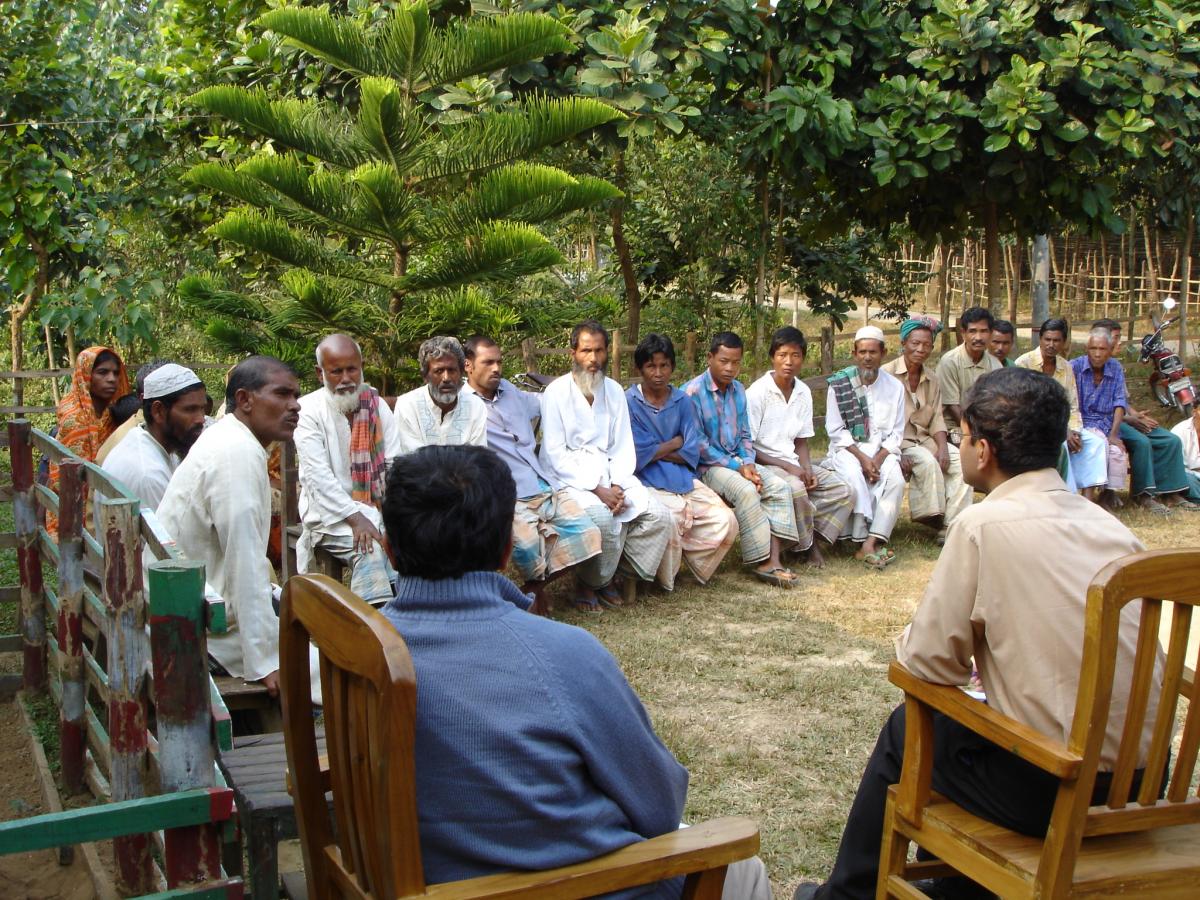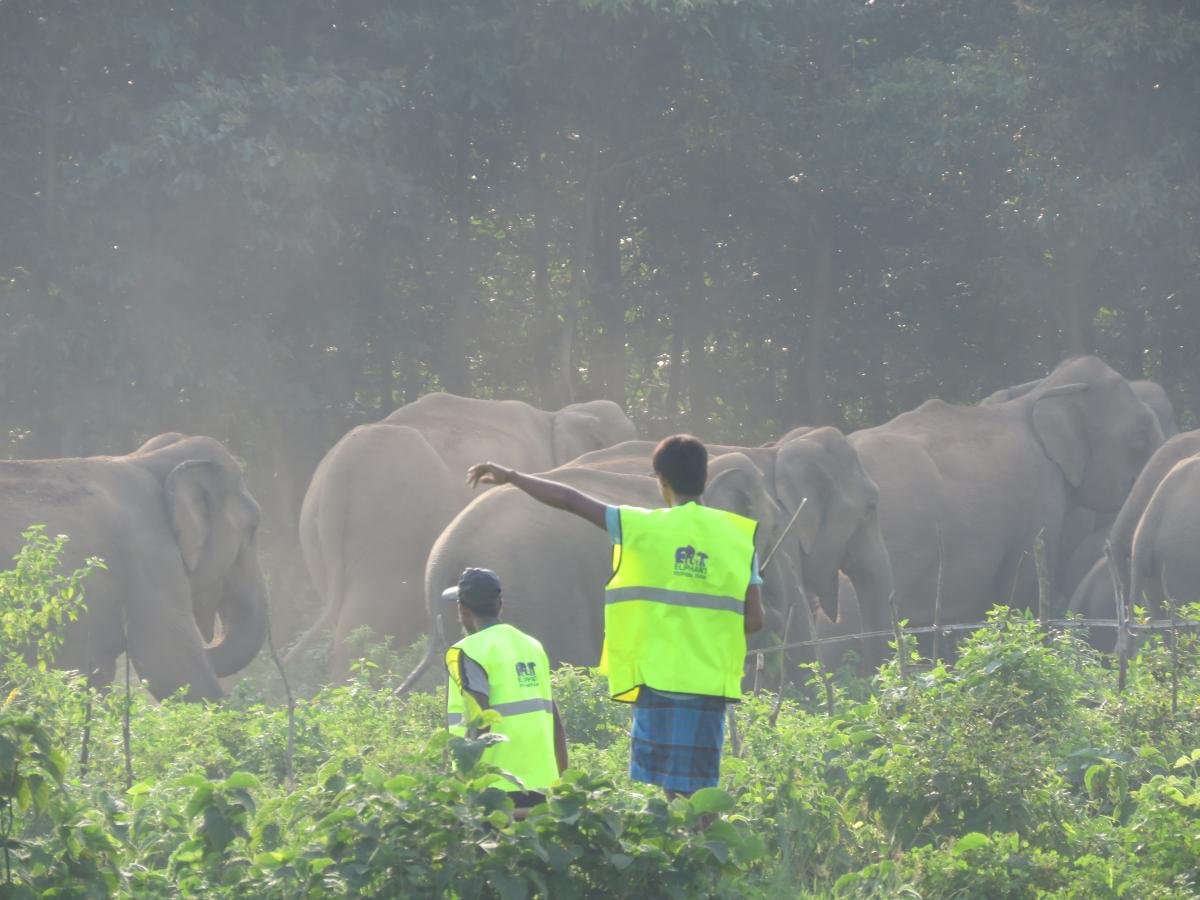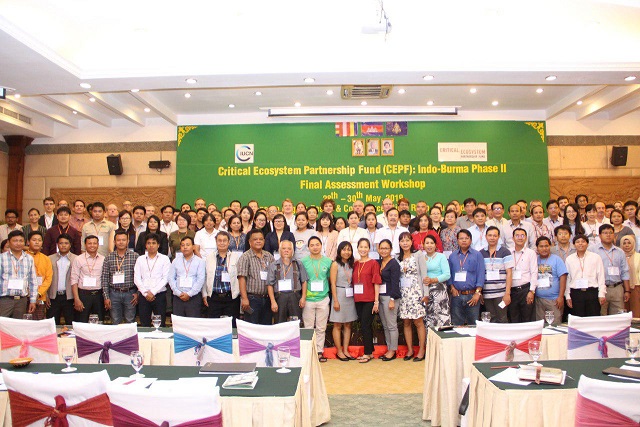Blog: Effective migratory elephant management requires transboundary cooperation and innovative approaches
Over the last decade, conflicts between humans and elephants have been a serious concern in Bangladesh, especially near the central-north border with India. Collaboration between the two neighbours and community-based initiatives can play a crucial role in managing such challenges.
In December 2006, a couple of colleagues and I went to Madhutila − a forest in the Sherpur district of Bangladesh bordering India. The Bangladesh Forest Department had asked IUCN to visit that place as people were suffering from unexpected attacks from migratory elephants.
I remember meeting many people coming from surrounding areas as well. They were showing us the injuries they sustained from the migratory elephant attacks. They also showed us photographs of destroyed houses and their dear loved ones who were killed by elephants. These people were seeking help to overcome the unfamiliar disaster. I found them afraid, desperate and helpless.
Ten years on, my visit to the same community last month revealed some drastic changes. Over the last two years, IUCN Bangladesh and the Bangladesh Forest Department have placed community members into 23 groups, called Elephant Response Teams, as part of an elephant conservation initiative. The Elephant Response Teams have been trained to chase away elephants once they come near the locality. The Team members were also taught how to defend themselves and their assets from these migratory attackers.
But more can be done.
For effective management of migratory elephants on the Bangladesh-India border, we need to follow two basic approaches. First, it is vital to have effective transboundary collaboration between the Bangladeshi and Indian Governments. The Forest Departments of Bangladesh and India have already had a dialogue in late 2015 on transboundary elephant management, which ended with a few joint recommendations. They are now in the process of finalizing a protocol for transboundary elephant management. IUCN Bangladesh has since been closely working with the Bangladesh Forest Department in taking these transboundary initiatives forward. In addition to these national level initiatives, it is also important that district administrations of both countries – for example, Sherpur of Bangladesh and Tura (Meghalaya State) of India – raise migratory elephant management issues at their regular meetings and develop effective local solutions with support from their respective Governments.
Until we have a sound, effective migratory elephant management in place, the people of Bangladesh need to adapt to migratory elephant attacks by introducing mitigation measures. This is where the second approach comes in.
The people of Sherpur use various techniques to chase invading elephants away. The use of flaming torches and search-lights are the most effective methods. Other techniques, like using battery-run torches, sharp weapons (elephants fear shiny blades), sound crackers, sirens, and hand-mikes (to make noise), are also used, but they have not been found to be too effective. In 2006, I was told that elephants did not attack houses with electric light bulbs. However this year, there have been incidences where elephants have broken light bulbs with their trunks while invading houses. These examples indicate the need for being innovative while implementing human-elephant conflict mitigation options.
In south-eastern Bangladesh, IUCN has recently piloted several mitigation options to reduce human-elephant conflicts in some conflict-prone areas. One successful initiative was the cultivation of crops like chilli or bitter gourd, which are not preferred by elephants. This reduces crop damage by elephants. A number of barriers were also tried to stop elephants from damaging human settlements and properties. Bio-fencing with thorny plants (e.g. cane) acts as a natural barricade deterring elephants from entering a locality. A solar electric fence carries high-voltage, but very brief electric pulses, and shocks elephants as they come in contact. A trip alarm goes off when elephants pass through an encircled area – it scares away elephants and alerts people of an elephant attack. Fencing an area with chilli-coated rope was also found to be useful to save crops, especially during the dry season. This piloting has been an interesting opportunity for trying technological innovations in human-wildlife conflict management.
Some of these tested, effective options could be tried in Sherpur and other parts of northern Bangladesh suffering from migratory elephant attacks − but not all, and not at once. Given the elephants’ high intelligence, we need to keep a handful of mitigation options ready and introduce them gradually so that elephants do not get used to all at once. It is also important to remember that such innovations should go through testing and evaluation before they are recommended for scaling up. All such adaptation or mitigation techniques have to be evaluated constantly as well to check for their effectiveness.
While working with local communities to mitigate hazardous situations, like human-elephant conflicts, there is a risk of people depending too much on external expertise and resources. It is therefore critical to have a community-led system in place which will ensure that the local people have the capacity to adapt to local hazards. This will help them to continue innovating in response to dynamic situations by using their acquired lessons, locally available resources, and networks. Such people-led system gives communities the confidence to mitigate human-wildlife conflicts.
This blog post was contributed by Haseeb Md. Irfanullah, Programme Coordinator for IUCN Bangladesh. Haseeb tweets as @hmirfanullah





